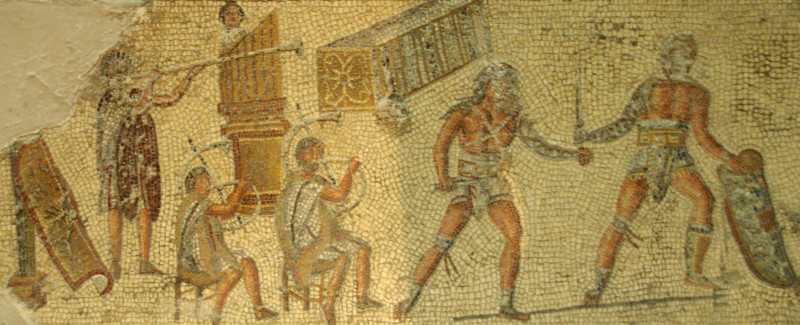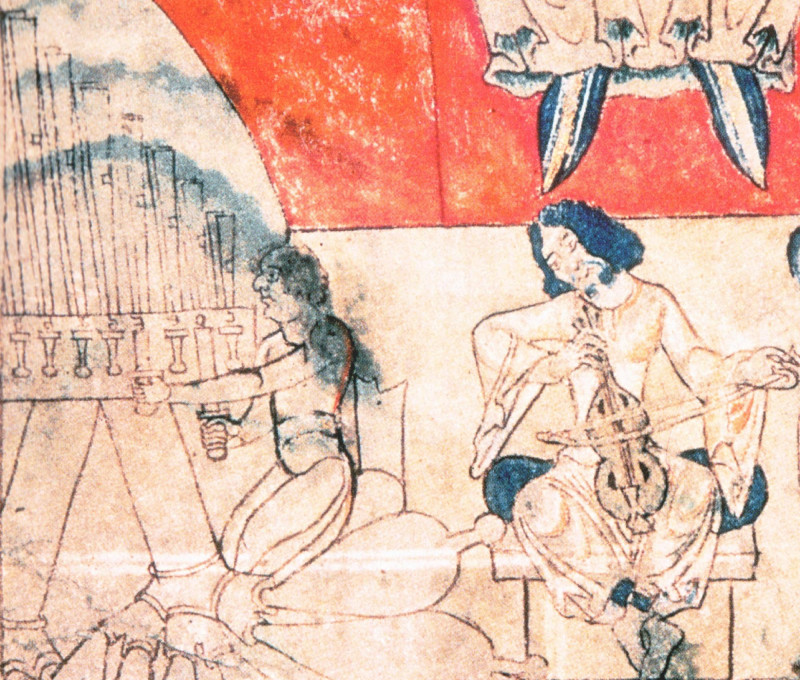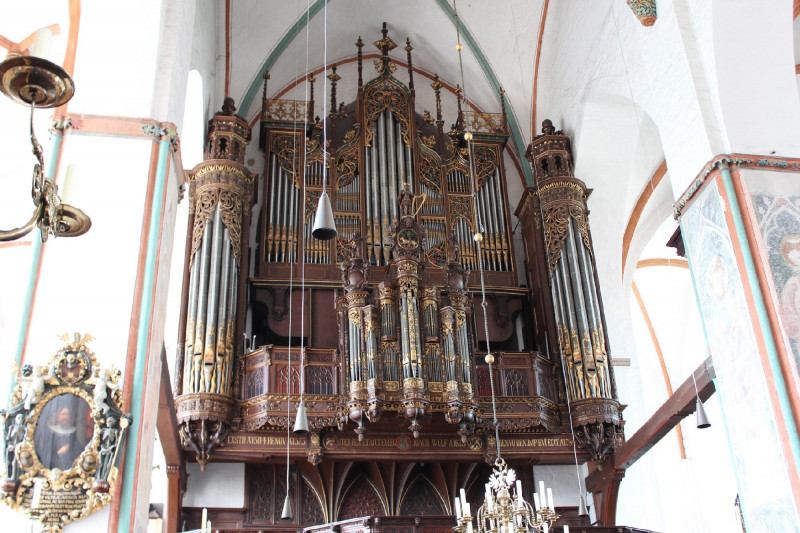From the hydraulis to the concert organ
What kind of instrument is an organ (organon, organum)? How does it work, and how does it look like? There is no short answer to these questions. On the one hand, organ has no clearly definable size or shape; during its long history the name designated many kind of instruments from hydraulic organs with a dozen pipes to a concert organ with seven manuals and thousands of pipes which can be regarded as a world record of its kind. On the other hand, the way of sounding or the size of the keys also varied over the centuries. By the time the pipe organ of the Academy of Music, one of the most modern instrument of its age, was installed at the Grand Hall, the organ had changed as much as it could throughout its long journey across the past two thousand years.
The history of the organ dates back to around 250 BC, when Ctesibius of Alexandria (285–222 BC) invented the hydraulis. Although the organ was called the “King of the Instruments” by Mozart, the sound of this early mechanical pipe organ used in ancient Roman arenas might have been more displeasing than elevated. The hydraulis had a penetrating sound, similar to that of the ancient aulos (double-reeded wind instrument), and, as such, it was used as an outdoor instrument. It might have signalled the beginning and the end of the fights or the performances, in moments when decisions were made publicly over life or death.
The instrument discovered in 1931 as an exceptional find at the site of the ancient city of Aquincum, already had a slightly different function. The wife of the organ player of the Legio II Adiutrix, during her short life “amused the people playing the hydraulis so well”, as it reads the Latin inscription on her sarcophagus from the 3rd century AD.

Musicians playing on instruments (from the left to right: tuba, hydraulis and two cornua)
during a gladiators’ fight. Detail from the floor mosaic in Zliten, Lybia (2nd century AD)
According to this inscription, the pious Aelia Sabina also played on some kind of string instrument and had a pleasant voice. Hence, the water organ had become an instrument suitable for entertaining and accompaniment to singing, which, by this time, produced sound through flue pipes. The construction of such a complex instrument might have been very expensive, and since the hydraulis was regarded as an object of great value, it served as a gift to several European monarchs. In 757 the French king Pepin the Short set up an organ in a church at Compiègne, which was sent to him by the Byzantine emperor, though the instrument was never used in church services.
Christianity ignored the use of the organ for a long time, since the past of the instrument was considered to be linked to paganism. Although earlier historical records can also be found, the use of the organon in major Western-European churches began to spread in the 9th century at the latest. Their main function was similar to that of bells, calling the faithful to worship, but according to several historical sources, at the moments of liturgical acclamations (like Alleluia or Kyrie) organs and bells also sounded together.
On a 12th century depiction appears a new secular instrument: a small portative organ or simply called portative, the bellows of which were manipulated by the player itself.

produced sound by drawing out stop-like sliders as it is seen on this illustration
from the 12th-century manuscript Bible of St. Etienne Harding at Dijon.
The regal which has a set of reed pipes may claim an earlier origin. Another small organ called positive played an increasingly important role from the 15th century. The latter had only flue pipes, often in several rows, and because of its large size, the instrument could be moved with difficulty.
The first use of pedals on large church organs dates back to the 14th century. The great organ in the cathedral of Halberstadt was described by Michael Praetorius in the second volume of his book Syntagma Musicum. Its bellows were worked by ten men, and it had three manuals and a pedalboard. The keys of the first and second manual were so large that they had to be pressed with the fist. Since it was not possible to change registers (stops), these type of instruments, known as Blockwerk or Mixture-Organ, could produce only a very loud sound.
To vary the loudness and the timbre of the sound, multiple manuals were built, as was in the case of the Halberstadt organ. To control separately the individual ranks of pipes a valve system in the form of slider or spring chests were developed. Whilst in Italy and in the Iberian Peninsula one-manual organs became increasingly common, in the North the organ became a large instrument with several sounding divisions (Werk) visibly divided into separate chests.

By the time of the Renaissance, the late medieval organ building had developed instruments with changeable timbres and registers, though their keyboards were very different compared to those used today. These improvements opened the way not just to the organ transcriptions of choral works, but also to the development of independent organ compositions of various genre and structure, which shaped the further development of the organ building. From the beginning of the 16th century regional schools of organ building began to develop throughout Europe.
In the Baroque period, new registers were added to the instrument, and in Northern Europe builders constructed organs even with four manuals. Due to the style developed by Johann Sebastian Bach, the orchestral-like sounding registers of the organ became increasingly common. These changes paved the way for the Romantic type of organ. As a result of the larger size, the extended registers and the higher windchest pressure, a greater force was required to overcome the wind pressure and to press the keys. Still, the composers of the 19th century often ignored the capabilities of the instrument. The organ pieces of Mendelssohn and Liszt required a technique similar to that of their piano compositions, and the possibilities of the player were rather restricted on old-style instruments. To overcome these difficulties new technical solutions were introduced, and the tubular pneumatic action was invented. The operation of a tubular-pneumatic organ was accomplished by a change of air pressure within lead tubes that connect the organ’s console to its windchest. Other improvements aimed the instrument’s ability for dynamic variety according to the needs of the Romantic repertoire. As early as in the 17th century several mechanical devices were invented in Iberian organ music to control the dynamic range of certain ranks of pipes placed in separate boxes with a pedal. Improving this device the so called swell had been developed, which became increasingly common since the 19th century, especially in France. Several technical solutions were also introduced to control registers and create crescendo during the playing. Beside these devices the late Romantic German organs were built with electro-pneumatic actions making the play easier on this orchestral-like sounding instrument. Representing the latest achievements of the instrument’s history, the organ of the Academy of Music built in 1907 marked a new era in Hungarian organ building.
Balázs Méhes


